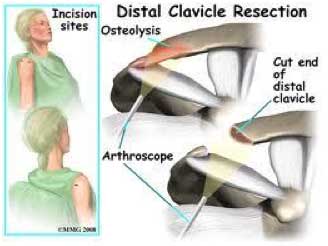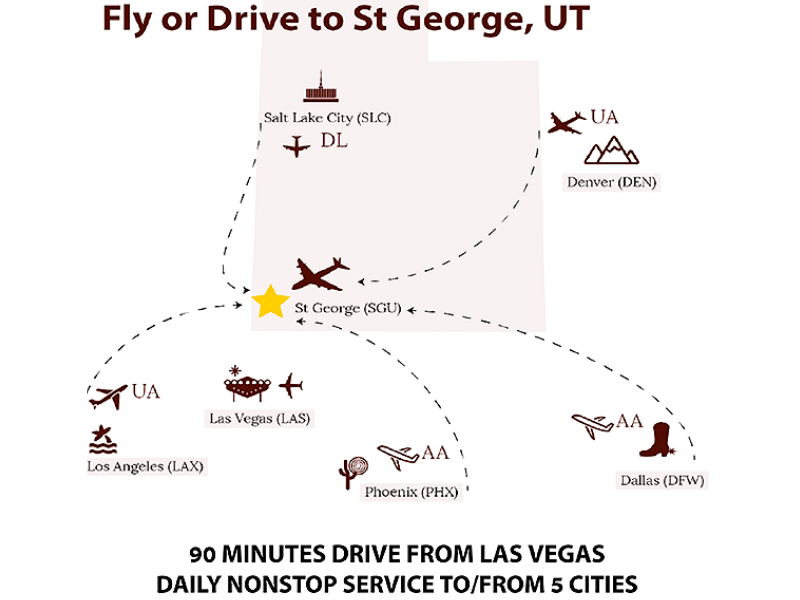Distal Clavicle Excision–Mumford Procedure (Arthroscopic)
Distal Clavicle Excision (Mumford Procedure)
Distal Clavicle Excision is a procedure used to treat impingement in the shoulder. Shoulder impingement is a painful condition in which the space between structures in a joint narrows, causing parts to rub or pinch that normally would not, which is very painful for the patient. This procedure treats impingement in the acromioclavicular (AC) joint to return the patient to pain-free mobility. Distal clavicle excision, also known as the Mumford Procedure this is a medical operation performed to improve shoulder pain and discomfort by excising the lateral end of the clavicle. Those suffering from osteoarthritis in the Acromioclavicular joint can opt for this procedure when non-surgical alternatives are unsuccessful. The surgery can be performed through an open or arthroscopic procedure. A regimen of physical therapy following surgery is prescribed, and most patients experience full recovery in 8 to 10 weeks post-surgery.

FAQS
Frequently asked questions about surgical procedures
Can I use my insurance and get these prices?
Payment is due 14 calendar days prior to your surgery date. If, after the cutoff, your account is not settled, your case must be postponed.
How quickly can I have surgery?
How will I meet my surgeon?
If I had a car or work accident, would you work with my employer or attorney for payment?
What if I get sick right before my surgery?
You could develop a respiratory infection, a urinary tract infection, COVID, or some other condition that may necessitate postponement. There is no penalty when this happens.
What’s Included:
- Facility fee
- Graft and hardware costs (if needed)
- Surgeon and assistant surgeon fees
- Anesthesiologist
- Time in the recovery unit (at no additional charge)
- Initial consultation visit
- One post-operative visit
*Please note: If you choose not to proceed with surgery after the initial consultation, or if you delay your procedure for more than 6 weeks, you will need to update your consultation at a cost of $375.
What’s not included:
- Lab testing before and after the surgery, as needed
- Electrocardiogram (EKG), depending on age. If you had one elsewhere in the past 6 months and it read “normal”, we can forego this expense.
- Imaging costs. X-rays and MRIs can be obtained anywhere.
- Physical therapy services
- Medications you’ll need (oral or IV antibiotic infusions if an infection arises)
- Wound care
- Bracing supplies
- Additional doctor visits (a pre-operative visit with the surgeon, in person, and any required post-op follow-ups after the suture removal to monitor your progress
- Additional surgical intervention if a complication arises
- Additional imaging or hospital care if a blood clot develops
Preparation for Distal Clavicle Excision
- A history, examination, and a few lab tests
- The surgeon usually orders X-rays, an MRI, a CT Scan, or an EMG to look into the joint before the procedure.
- The patient should stop anti-inflammatory drugs like aspirin at least a week before surgery.
- Medications being taken for other conditions like diabetes, heart disease, and blood pressure should be continued with advice from the treating doctor.
- The history of smoking or alcohol drinking should be told to the surgeon. Smoking should be stopped if possible, as it interferes with wound healing.
- Recent history of cough, cold, fever, viral infections, or other illnesses should be reported to the surgeon.
- Patient is not allowed to eat or drink anything at least 8 to 12 hours before surgery, except essential medicines with sips of water.
- Make sure to receive all the equipment needed after going home, like a shoulder sling, ice packs, or coolers.
Distal Clavicle Excision Surgery
A number of half-inch incisions will be made to allow the arthroscope to enter the shoulder joint. A sterile saline solution will be pumped into the joint both to cleanse it and to expand it for better visualization. The surgical staff may also pump air into the joint to create more room to see inside the joint. While watching a monitor that shows a magnified image of the inside of the shoulder, the surgeon guides the arthroscope to perform a number of procedures within the joint.
After removing any degenerative or damaged tissue around the AC joint and bursa bone spurs from the acromion, or repairing the rotator cuff, the surgeon uses a surgical cutter to remove the last half-inch from the clavicle. The surgeon may then move the arm to test for impingement. The patient may be discharged following the procedure or may remain in the hospital for one or two days.
What to expect after your surgery
Recovery from Distal Clavicle Excision
- The shoulder is usually covered with dressings and immobilized by a sling. Fingers should be moved to improve the circulation.
- Vitals are monitored by a trained nurse for at least half an hour. After this, the patient is moved to the general ward.
- The patient may be discharged on the same day or may have to be admitted overnight. Pain-relieving medications are given to the patient.
- Shoulder sling is usually advised to be used for about three to six weeks. Follow-up
- Swelling should be monitored, and the sling should be used strictly for 2 days after surgery.
- The ice packs should be applied three or four times a day.
- Some drainage of blood or fluid can occur during the first 2 days.
- Sling should be used continuously for the first few days. But intermittent use of the sling may need to be continued for three to six weeks.
- Bathing is to be started after 7 days of the surgery.
Distal Clavicle Excision Complications/Risks
- Blood clots (very rare)
- Surgical wound infection
- Reaction to anesthesia
- Risk of developing arthritis
- Weakening of muscles
- Stiffness
- Neurovascular injury
Can I Travel to St George for Surgery?
Yes, and we’ll help you make all your arrangements.
- We have arrangements to try to obtain free flights through a non-profit volunteer pilot organization. We can do this with 10 days’ advance notice in most cases.
- We have discount codes for the Holiday Inn in town. This hotel is 1.5 miles from the surgery center and 2 miles from our clinic.
- We’ll arrange to send your after-surgery medications to your hometown pharmacy for pickup before you leave.
What if I would rather drive to St George?
No problem, we can help with those plans as well. When you have surgery with us, we’ll need to make sure you’re safe and comfortable after surgery. We’ll arrange cold compression therapy that requires an AC/DC adaptor/transformer and frequent stops to stretch and refill the ice reservoir on the road.
We’ll ask about the vehicle you’ll travel in to ensure you have a way to elevate and stretch out in the vehicle on the road while someone else does the driving.

How are follow-up and initial consultations handled?
In-person and telehealth consultations are possible with the surgeon to whom your case is assigned. The initial visit is included in the surgical package and is valued at $375.
We can also obtain the flights from the volunteer pilot nonprofit if you’d like to come for initial and follow-up visits in person. One follow-up visit is included in the surgical package at a value of $175. Any additional visits are charged at the time of service to your credit or debit card.
Transparent Pricing Guide
Find out the exact cost of your procedure in seconds, with no hidden fees, no surprises, and complete transparency every step of the way.
